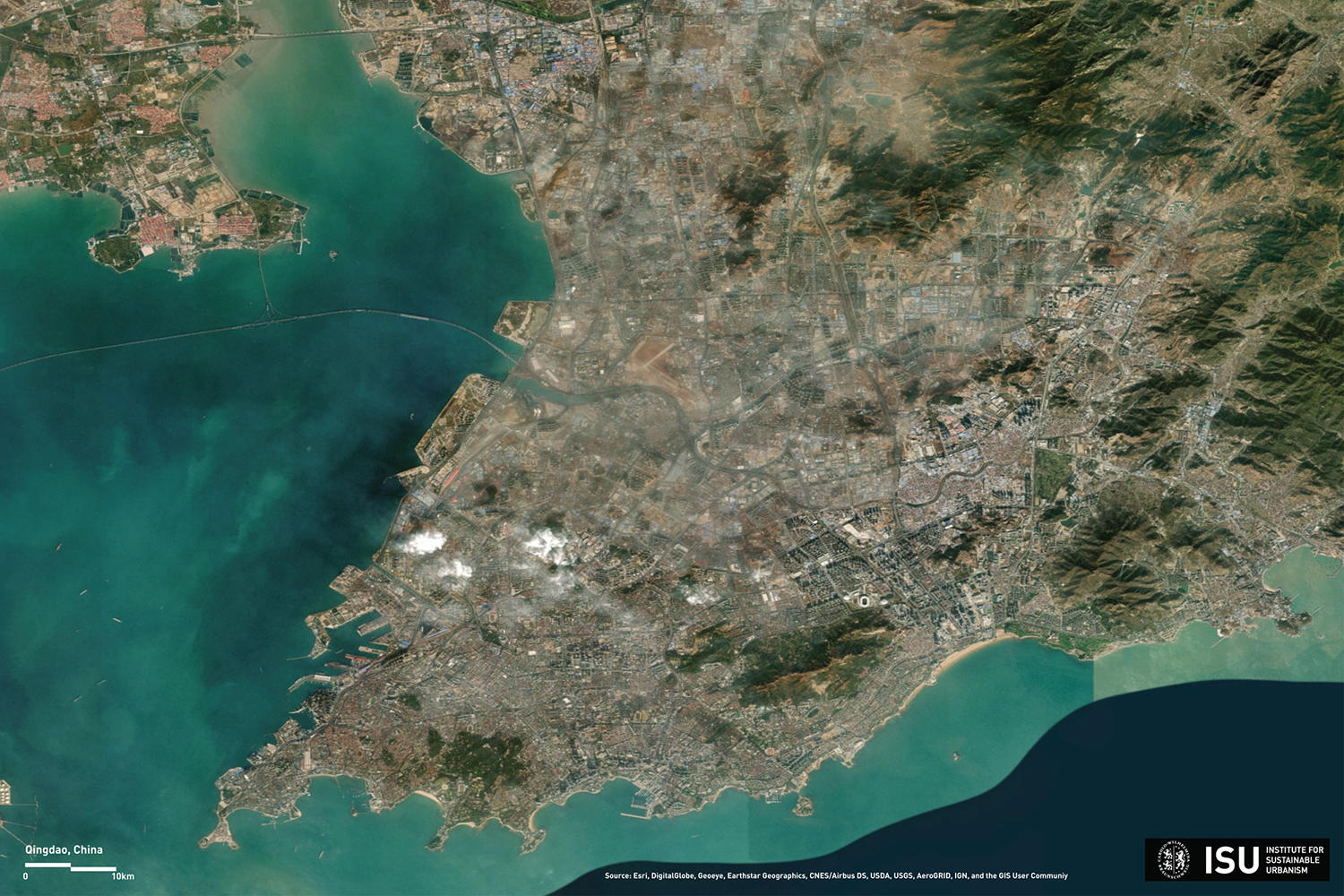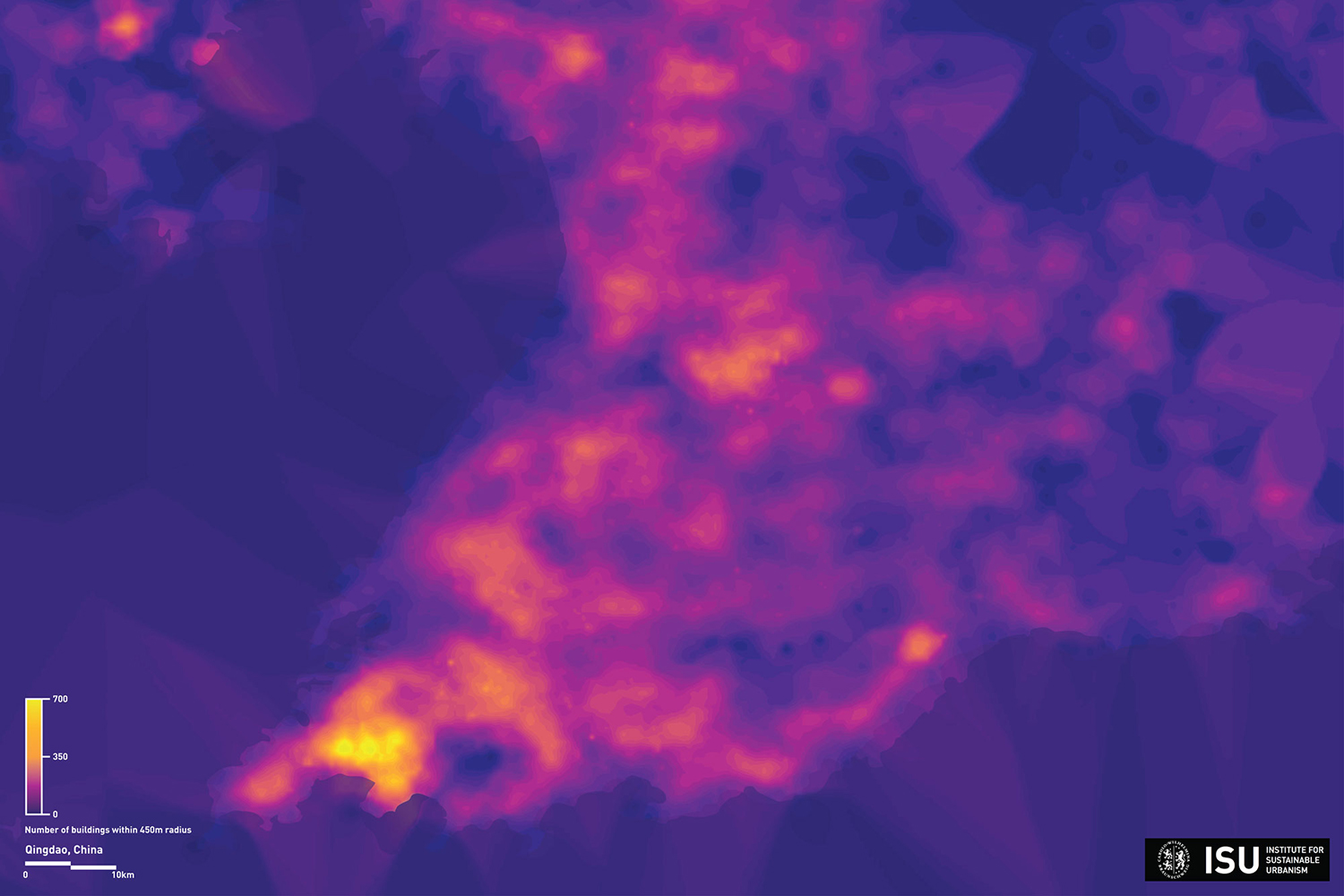Deciphering Urban Regions: Typifying settlement patterns of the Qingdao Bay
Deciphering Urban Regions: Typifying settlement patterns of the Qingdao Bay
01.03.2020 | The joint team of CAUP and ISU advances the TOPOI method to identify and typify settlement patterns in Qingdao. Originally developed in the METAPOLIS project, which is set in Niedersachsen, the TOPOI method required some evolution to to fit the increase in scale and density of the cities and towns of the Chinese context. For instance the Qingdao bay area, which is the densest of the region, required SP TOPOI to utilize that density in order to give us an insight into how that hyper dense area is actually subdivided. Through field research taken in January of 2020 researchers noticed a correlation between building density and how public space was utilized. This observation was used to generate data for the TOPOI method. The images show that data visualized. The yellow areas are higher density and begin to show us subdivision of the city which will be used in the TOPOI method.
In an iterative process, these TOPOI are enriched with findings of other disciplinary research, ultimately modeling and simulating the diverse interdependencies. Through the TOPOI method the scientists are able to gain a better understanding of settlement patterns along the urban-rural gradient. By evaluating these through a morphological approach it is possible to more accurately define and analyze dynamic urban-rural systems.
The visualization gives insight into current EAST-CITIES research. The team develops data-driven methods such as Image Classification to generate a comprehensive geospatial database based on satellite imagery and other accessible data sources. Based on this the scientists refine the TOPOI method initially developed within the METAPOLIS project. Model and data-driven multi-criteria geospatial analysis, advanced visualization techniques and visual analytic methods are applied to research on manifold attributes defining the Qingdao TOPOI, of which the map visualizes one: the proximity of buildings within a radius of 450 meters (5 minute walking distance) around each single building in the city.
The ISU-team developed the map applying the Inverse Distance Weighted interpolation. IDW weighs the influence of one point to another relative to the distance between the points. This method allows to visualize building proximity and is one of a series of attributes describing the TOPOI to have a better understanding of the morphology and specifics of settlement patterns of Qingdao. Areas in purple have a low proximity score and areas in yellow have a high proximity score.




